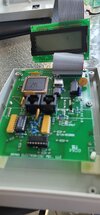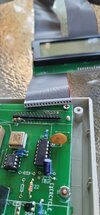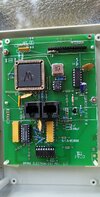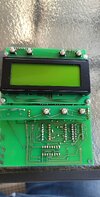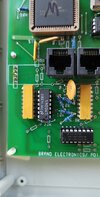I'm working on a device with a 4 line × 20 character HD44780 LCD that has a very dim backlight. The display is also at a poor angle for visibility. It's soldered in, so replacement isn't trivial.
I have a display that should be a direct replacement that is beautifully back-lit. I had two thoughts:
● Paralleling the displays to test for compatibility.
● Adding a second LCD in parallel as a second remote display.
I don't believe any damage would come from paralleling two character LCDs. And depending on how the interface is implemented, I think the scheme would work fine.
Has anybody tried this?
I have a display that should be a direct replacement that is beautifully back-lit. I had two thoughts:
● Paralleling the displays to test for compatibility.
● Adding a second LCD in parallel as a second remote display.
I don't believe any damage would come from paralleling two character LCDs. And depending on how the interface is implemented, I think the scheme would work fine.
Has anybody tried this?

